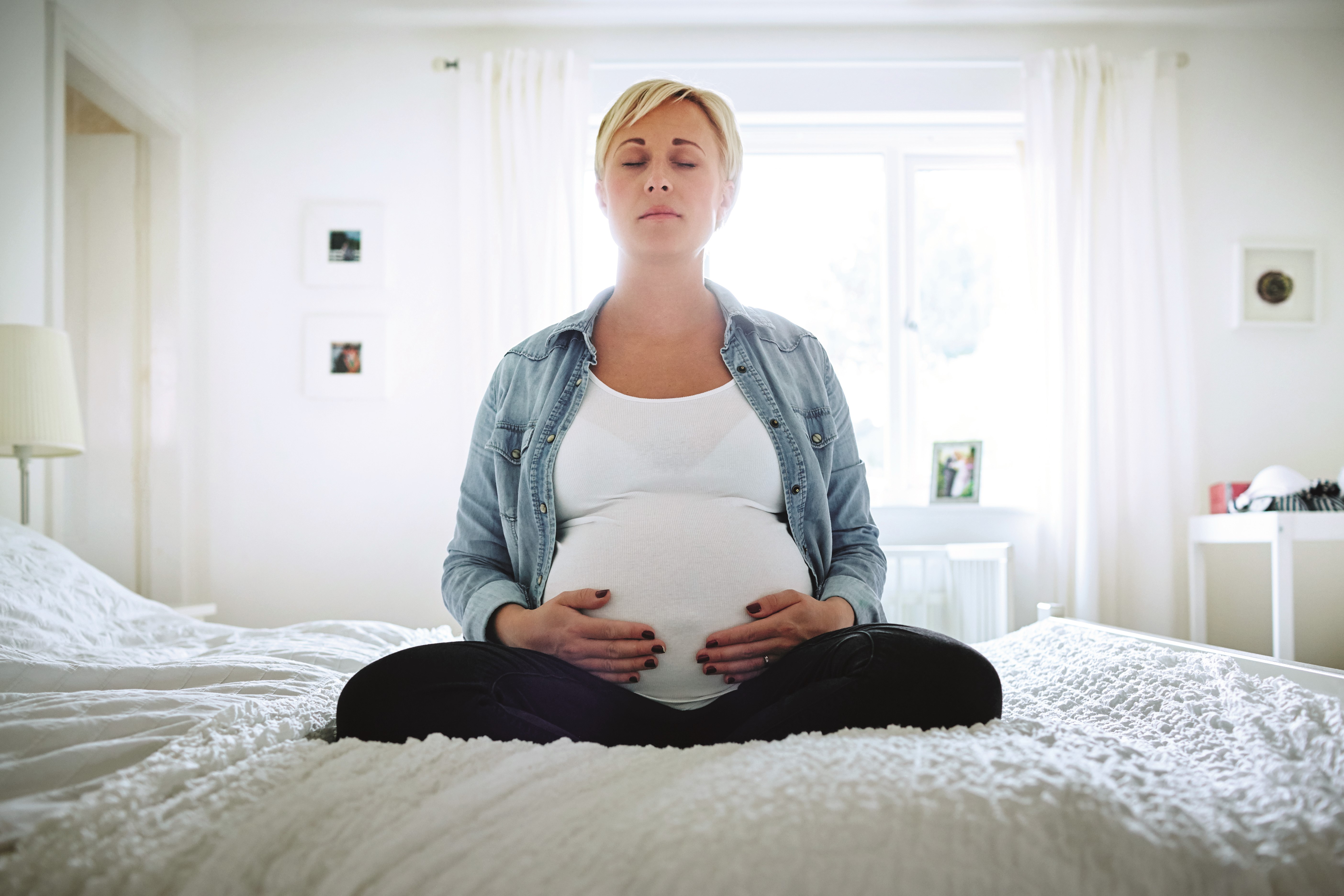Mindfulness for Pregnancy and Childbirth
By Dr Sian Warriner and Mark Pallis
Mindfulness has become mainstream in the last decade, and these exercises are great for everyone – whether you are pregnant or not.
Mindfulness is the practice of bringing your attention to whatever is happening in the present moment. This can be your breath, the sensations in your body (experienced through your five senses), your everyday actions (such as brushing your teeth or going for a walk), or your emotions ... almost anything in fact. The key is to intentionally experience the present moment, with kindness, self-compassion and without judging yourself – just being in the moment as best you can.

 Over the past two decades, the practice of mindfulness has evolved from its Eastern meditation roots to a mainstream, secular and increasingly accessible way of supporting our mental health and emotional wellbeing. We now have strong, scientifically robust evidence that a regular mindfulness practice can take us from a place where we may feel overwhelmed, stressed or out of control to a calmer and more contented headspace.
Over the past two decades, the practice of mindfulness has evolved from its Eastern meditation roots to a mainstream, secular and increasingly accessible way of supporting our mental health and emotional wellbeing. We now have strong, scientifically robust evidence that a regular mindfulness practice can take us from a place where we may feel overwhelmed, stressed or out of control to a calmer and more contented headspace.
Everyone’s experience of pregnancy is different. Rather than simply “getting through” this time, with mindfulness mums-to-be can thrive and become fully present for all the inevitable ups and downs that it holds. Learning the art of mindfulness will give you a set of simple yet hugely powerful skills that can completely transform your emotional experience and sense of wellbeing.
Regular mindfulness practice can help us to become less reactive, feel less stressed and have a more balanced perspective on life’s challenges. It has been shown to decrease the production of the stress hormones cortisol and adrenaline, and promote the release of the feel-good hormone oxytocin, which means that by incorporating mindfulness techniques into your everyday life during the first trimester of your pregnancy, you will be establishing a calmer environment for your baby to grow in – letting him or her know that they are safe and protected.
Exercise 1: Mindful Breathing: It All Starts Here
If you’ve never tried mindfulness before, the easiest way to start is by intentionally focusing on your breath. It’s a bit like squeezing the brakes on a bike – it slows you right down, allowing you to simply “be” in the moment, taking in the full remarkable experience of your current stage of pregnancy.
Sit comfortably somewhere nice and quiet, and allow yourself to arrive in this moment right here and now.
That’s it – you’ve started.
Bring your attention to the breath ...
As you breathe in, bring your attention fully to the in-breath, as you breathe out, bring your attention fully to the out-breath.
Noticing the pauses in between the breaths.
Allow the breath to be as it is. There’s no need to change, direct or force it in any way. Just allow the breath to flow.
Notice the sensation as the breath enters the body, then leaves it again, notice it in the abdomen, the chest, the nostrils, Focusing, perhaps, on where the sensation is most vivid for you.
When you notice that your attention has wandered away from the breath, be curious about what is pulling your attention, perhaps noticing any patterns that emerge.
Then, gently and kindly, escort your attention back to the breath, allowing it to anchor you in this present moment. Using resperate helps the individual to stay in the moment following the rhythmic guiding tones. Thus lowering blood pressure and stress.
After a few minutes expand your awareness to take in the whole of your body and breath, and after a few moments expand your awareness once more to take in the space around your body. Sense your whole body resting and breathing in this broad, expanded awareness.
Notice the sense of spaciousness that this may bring. As best you can, try to take a sense of this calm spaciousness with you into the rest of your day.
If for any reason, or at any point in your practice, you find the breath difficult to engage with, try shifting the focus of your attention to your feet on the floor and notice the sense of stability and steadiness that arises from this connection.
Exercise 2: Tuning Into the Senses: Five Alive
This practice, designed for all of the senses to be used in one sitting, is a wonderful way to connect you to the present moment and an opportunity for you to give your baby information about the world. Placing awareness on the physical sensations of sight, touch, sound, smell and taste can be wonderfully grounding and stabilizing.
- Notice five things that you can see - Bring your attention to five things around you that give a sense of the visual beauty of the world and that you would like your baby to see when it arrives. Perhaps the blueness of the sky, the petals of a flower, or a recent gift that you have been given.
- Notice four things that you can feel - Bring your attention to four things that you are currently feeling. Maybe a breeze on your face or the softness of a blanket in your hands.
- Notice three things that you can hear - Bring your attention to three sounds that you can hear in the background. Perhaps the sound of rain, birdsong or a favourite piece of music
- Notice two things that you can smell - Bring your awareness to two scents in your vicinity. Maybe a bunch of fresh flowers, a pot of coffee, or, if you’re outside, the smell of cut grass
- Notice one thing that you can taste - Bring your awareness to something that you can taste right now, in this moment. Perhaps by taking a sip of a drink, eating something, or just noticing the current taste in your mouth
Exercise 3: The Calm of the Out-Breath: Dancing Candle
In the run-up to your due date, it can be helpful, particularly in moments of worry or overwhelm, to take a little time out for yourself. The simple candlelight practice below is a useful one to do during such moments.
Light a candle and place it on a table in front of you.
Watch the flame and take a couple of breaths in and out to centre yourself.
Once you feel ready, gently exhale through your mouth toward the candle and notice the way your breath makes the flame dance.
Blowing out through your mouth makes it easier for you to extend your exhalation, which will help you to relax and stay calm.
Some mothers like to recall this image as their baby is being born – as a way to help them focus on the present moment and remain calm and in control.
Authors Note:
This extract on mindfulness in pregnancy and birth has been taken from How to Have a Mindful Pregnancy and Birth: 30 Simple Ways to Connect with Your Baby and Your Body on sale 8th August 2021 (Welbeck, £10.99)
Authors: Dr Sian Warriner RM, MSc, DClinPrac a Consultant Midwife and mother of four boys and Mark Pallis a children's mindfulness book author.